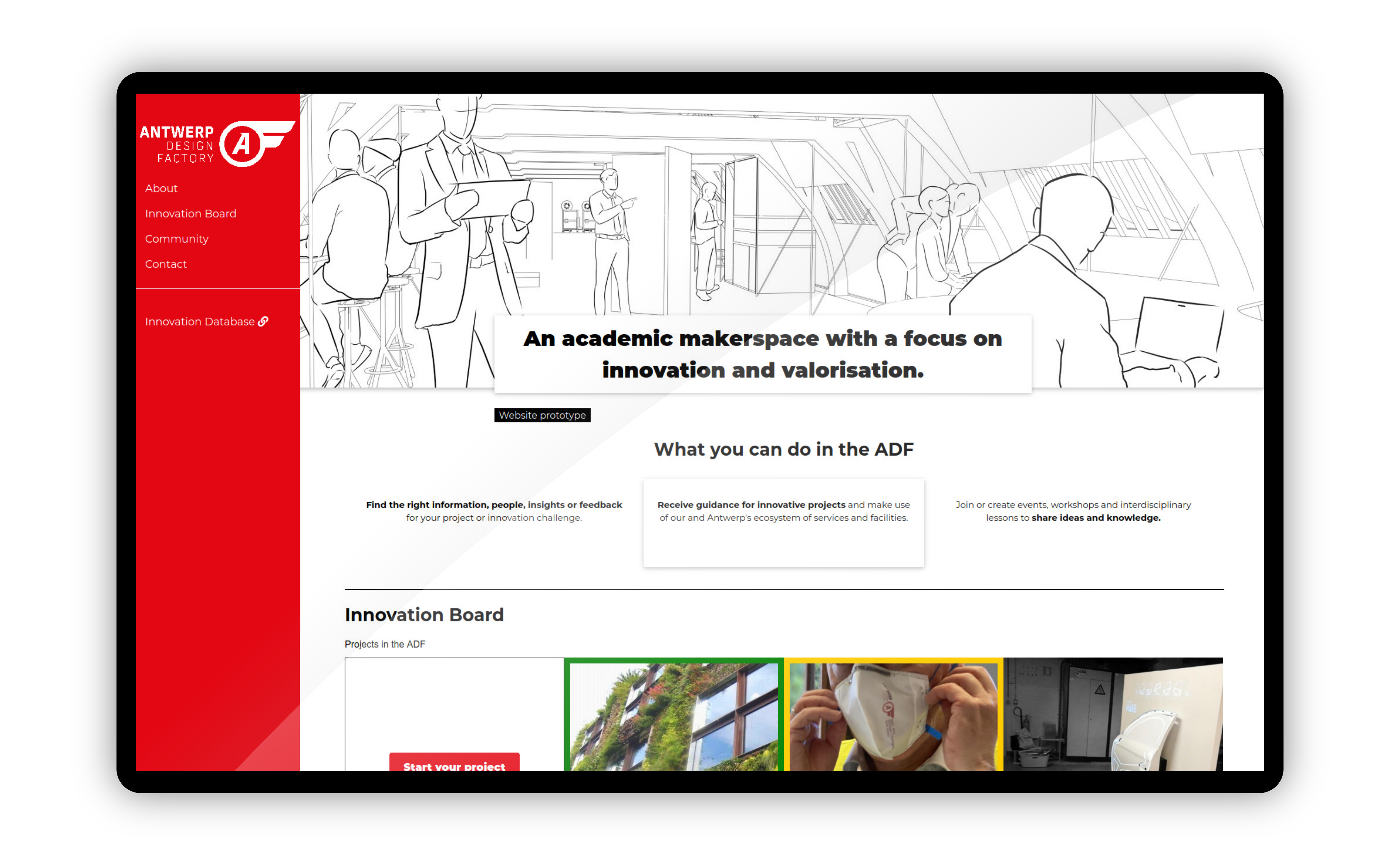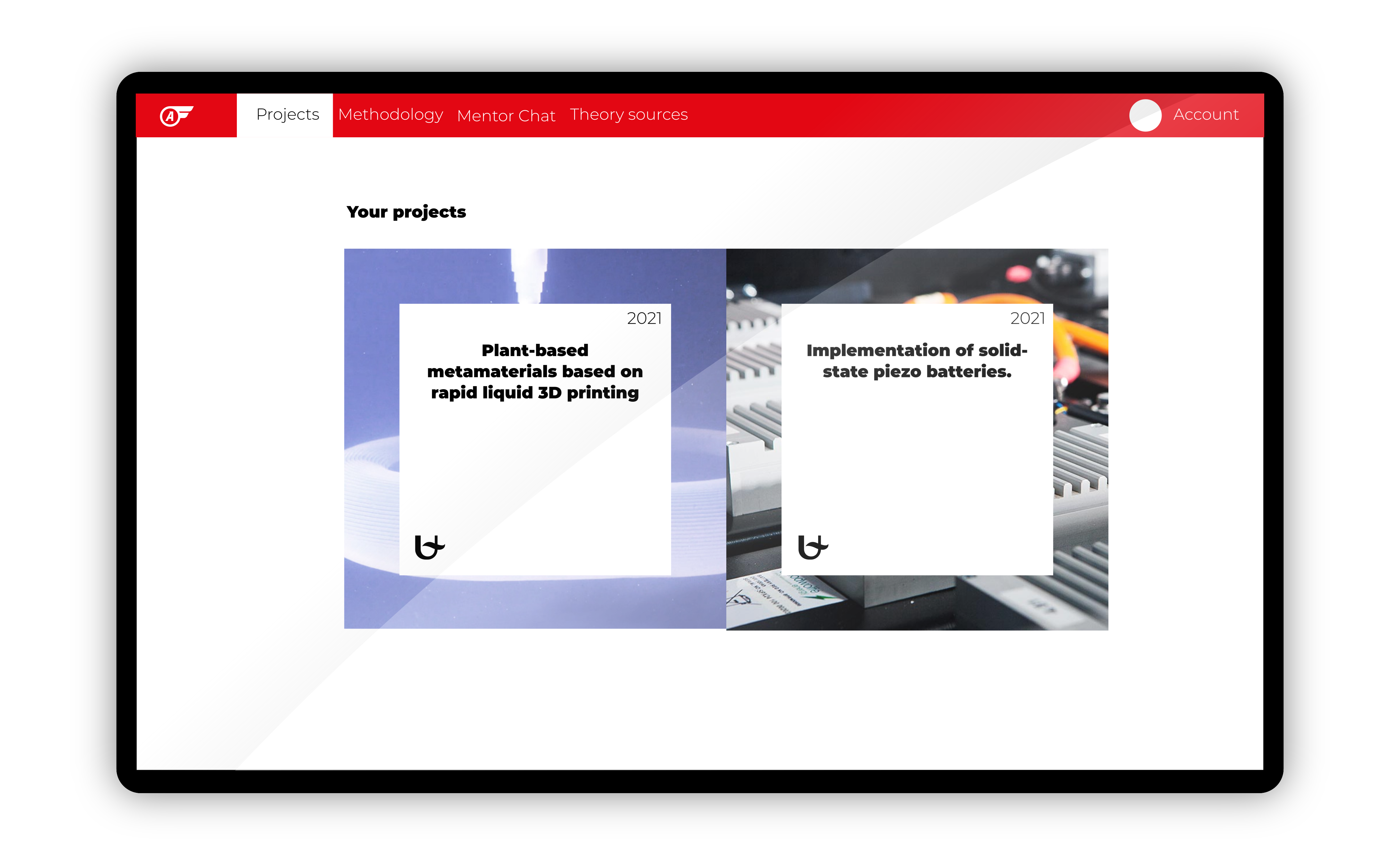Antwerp Design Factory Website Prototype
Master thesis: An academic makerspace with a focus on development for innovation and valorisation.
Subject
Design Goal - Product development receives a new home at a new campus with more space and facilities. With this change we saw an opportunity to set up a design factory at the new campus. My master thesis consisted of designing this design factory from the ground up. The result would be a conceptual design for the organisation. The thesis consists of two parts. Firstly preliminary research had to be conducted to discover what design factories are, what we know works, how they operate, what the context is in Antwerp and it's innovation ecosystem. The design adopts a systemic design approach, which looks at the the stakeholders and it's interactions to find the most impactful leverage points. For the research the following aspects have been taken into account: The internal workings of academic makerspaces, the context of the Antwerp Design Factory, Networking & Collaboration, Resistance, Stakeholders, Innovation, Psychology and Learning & Teaching. The first phase ends in putting together a design brief which states all the elements that need to be developed and it's requirements. The secod phase consists of a couple of sub-phases of actual designing. After each phase the advancements are verified so that the project keeps going in the right direction.
Design Constraints - Defining the scope of the thesis was important and useful. A student product development cannot set up an organisation of this kind with no experience or in-depth knowledge of how academic makerspaces and organisations work. The thesis focused on how to translate the leverage points that support innovation, learning and collaboration while also supporting the design factory's goals of valorisation and it's interdisciplinary character to valuable solutions. In this light the solution layed down the base on which the design factory can start and further develop and build upon.
Developed Skills
- A better understanding of organisations and the world of innovation and entrepreneurship.
- How to gather information from existing solutions and experts and translate it to the challenge at hand.
- Finding a way through complex designs while facing inherent paradoxes.
- Experience through a multitude of various challenges, this was by far the hardest and most complex design for me yet.
Overview
Results -
The foregoing process itself is far to long to put in a portfolio. If you want more information you can contact me.
The ADF provides the framework to combine the expertise and knowledge of the research world with the
methodology of Product Development in projects for innovation and valorisation.
In essence the ADF makes an innovation effort a lot less risky and makes sure the results are much
more valuable and supported by research. Startups or potential startups,
small and medium businesses and large corporations are all within the ADF's target audience and all
have their separate business strategies.
The resulting design provides a detailed journey of the different users
(see abstract illustration below). In this journey users make use of the space in which the ADF resides
(see illustration at the right). This is the physical interface through which most actions take place.
There are also a lot of actions that are supported by a digital interface. This consists of:
- A landing page for the ADF
- A tool to support the coaches of projects
- An innovation database that shows the possibilities for innovation in and around Antwerp and links to reach them.
- A starters kit that can that bundles all useful information on starting the ADF in a compact package.
The business aspect has also been tackled in this thesis, which describes it's chances of survivability when not supported by the academic institution.
Journey

Spaces

Services & Facilities


The website provides users a central place for taking actions in the ADF.
This can be for example to submit project candidates or to organise events.
The website also links to the innovation database.
The coach support tool supports students Product Development and business students which act as
coaches for the execution of innovation projects.


Business model
The ADF is a non-profit organisation. However it has to survive on it's own. Income is generated differently depending on the target audience. Startups or potential startups pay after a successful implementation of the solution. Small and medium businesses pay per phase and large corporations pay upfront and then per phase.

Verification
The design has been verified on it's functional, business and user aspects by getting feedback from experts and conducting user research.
Startup and further development
A digital starters-kit has been developed that combines all relative information on the concept. This can then be used as a reference and guide.
